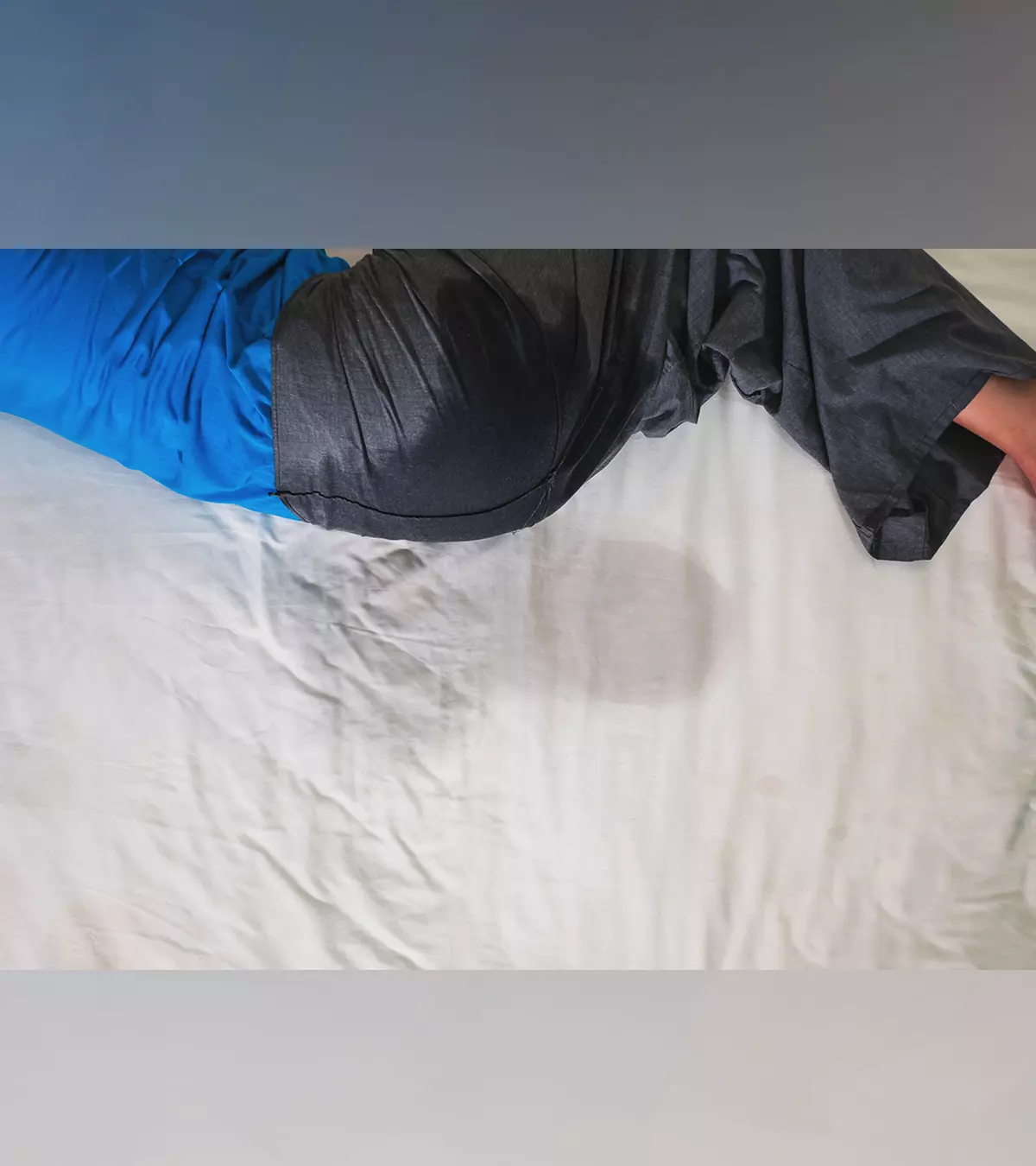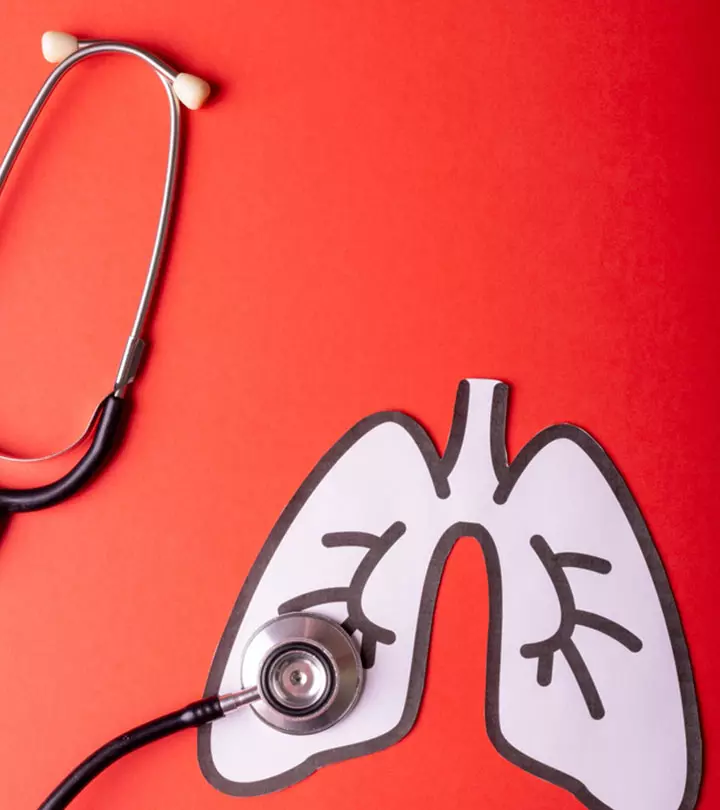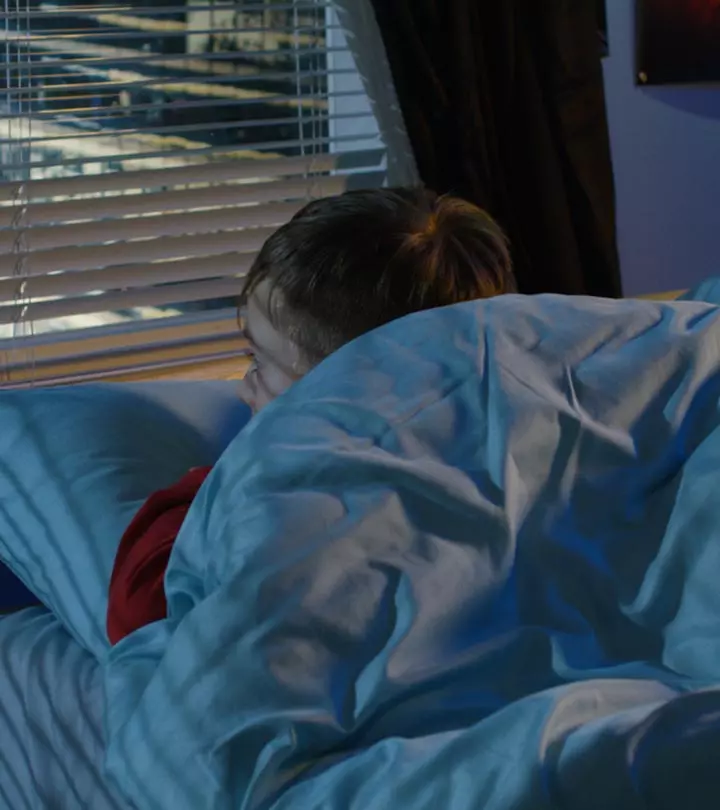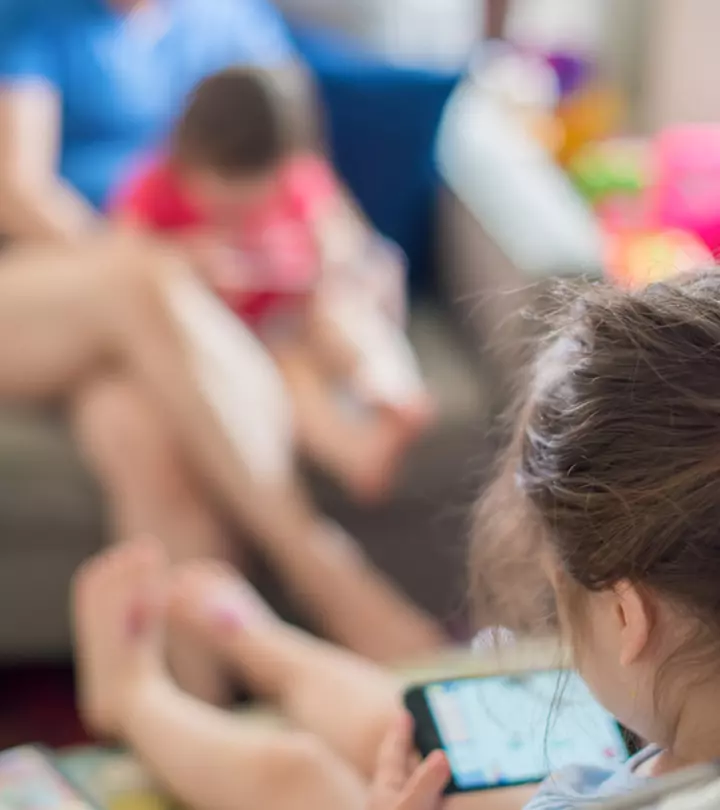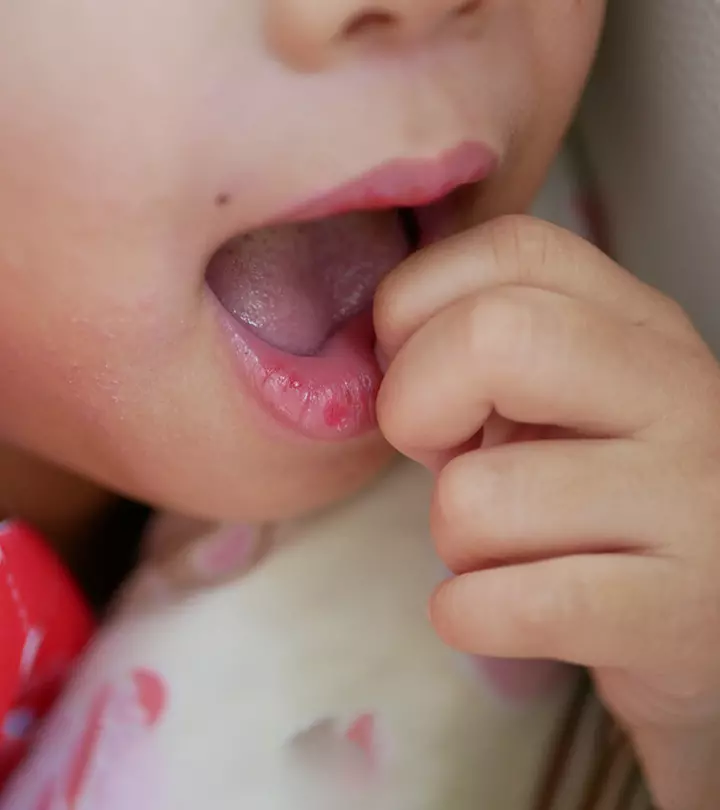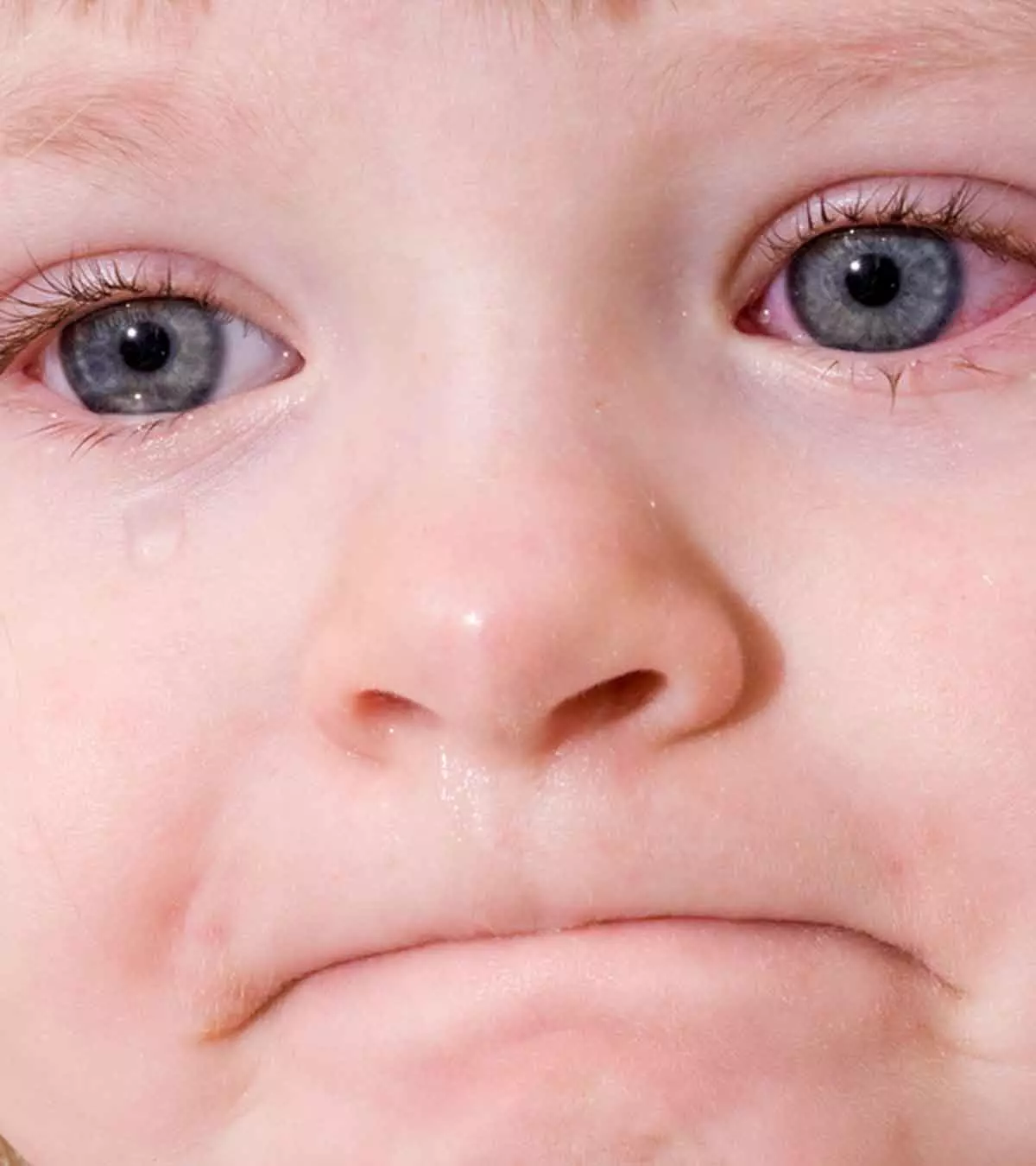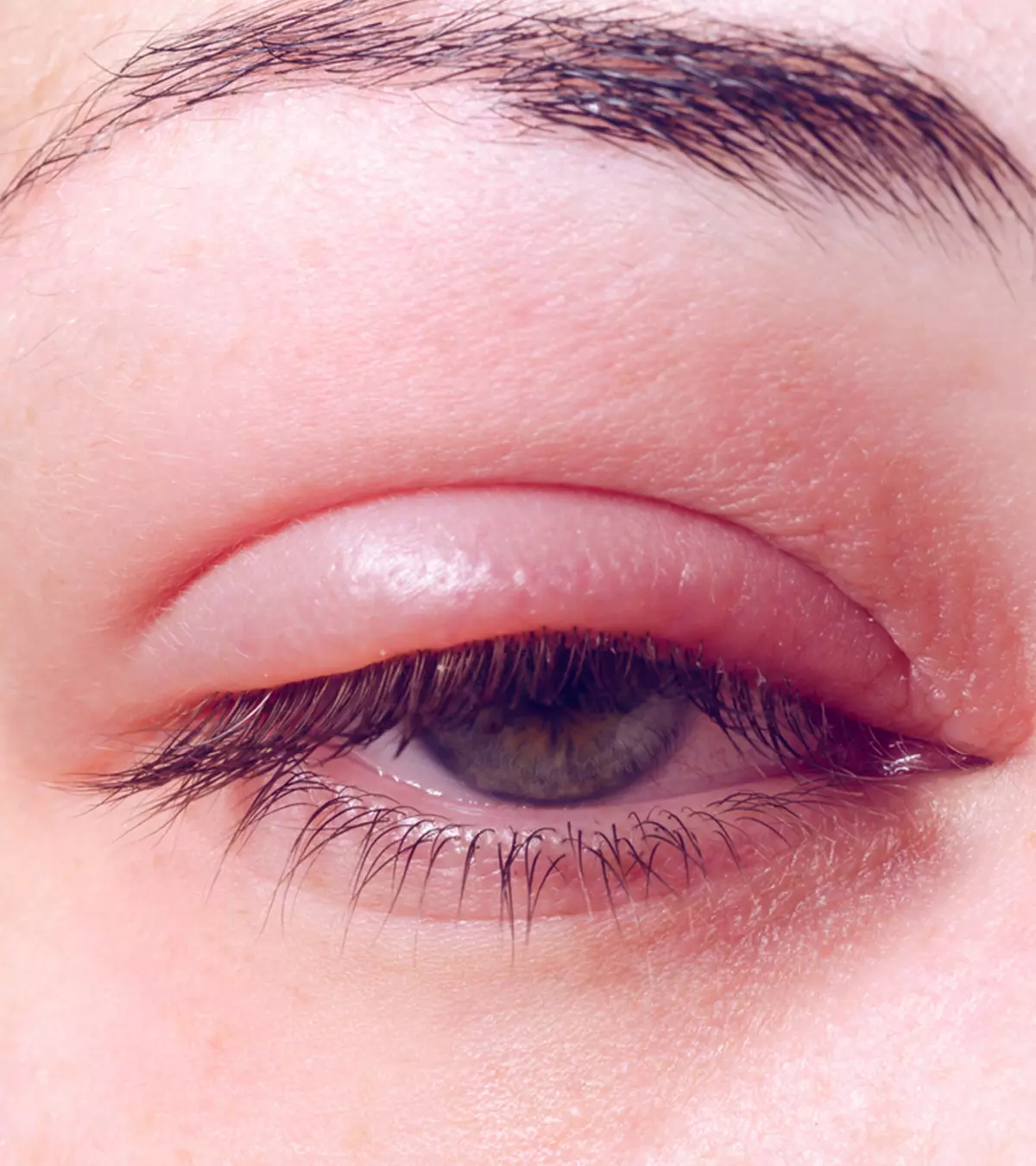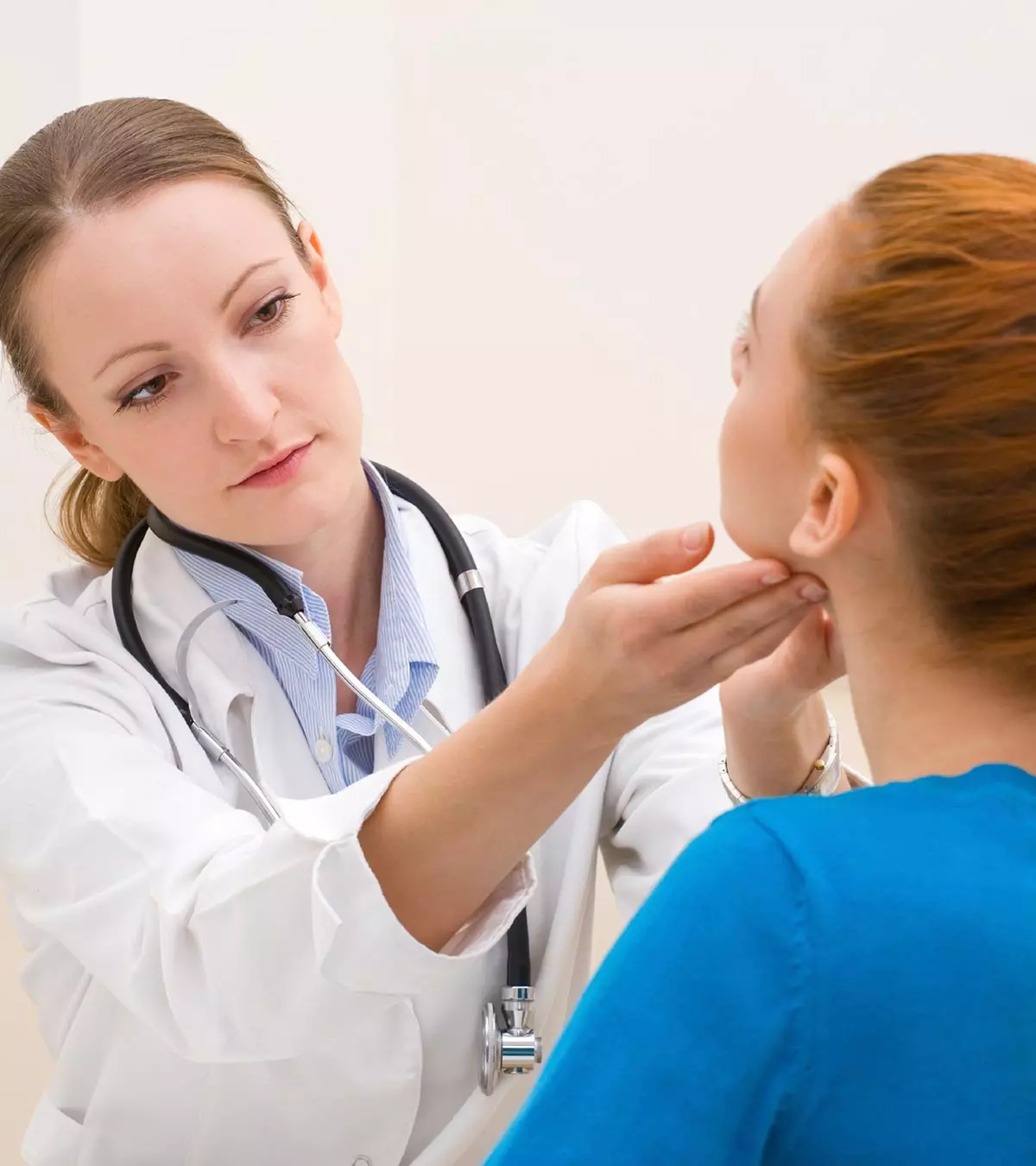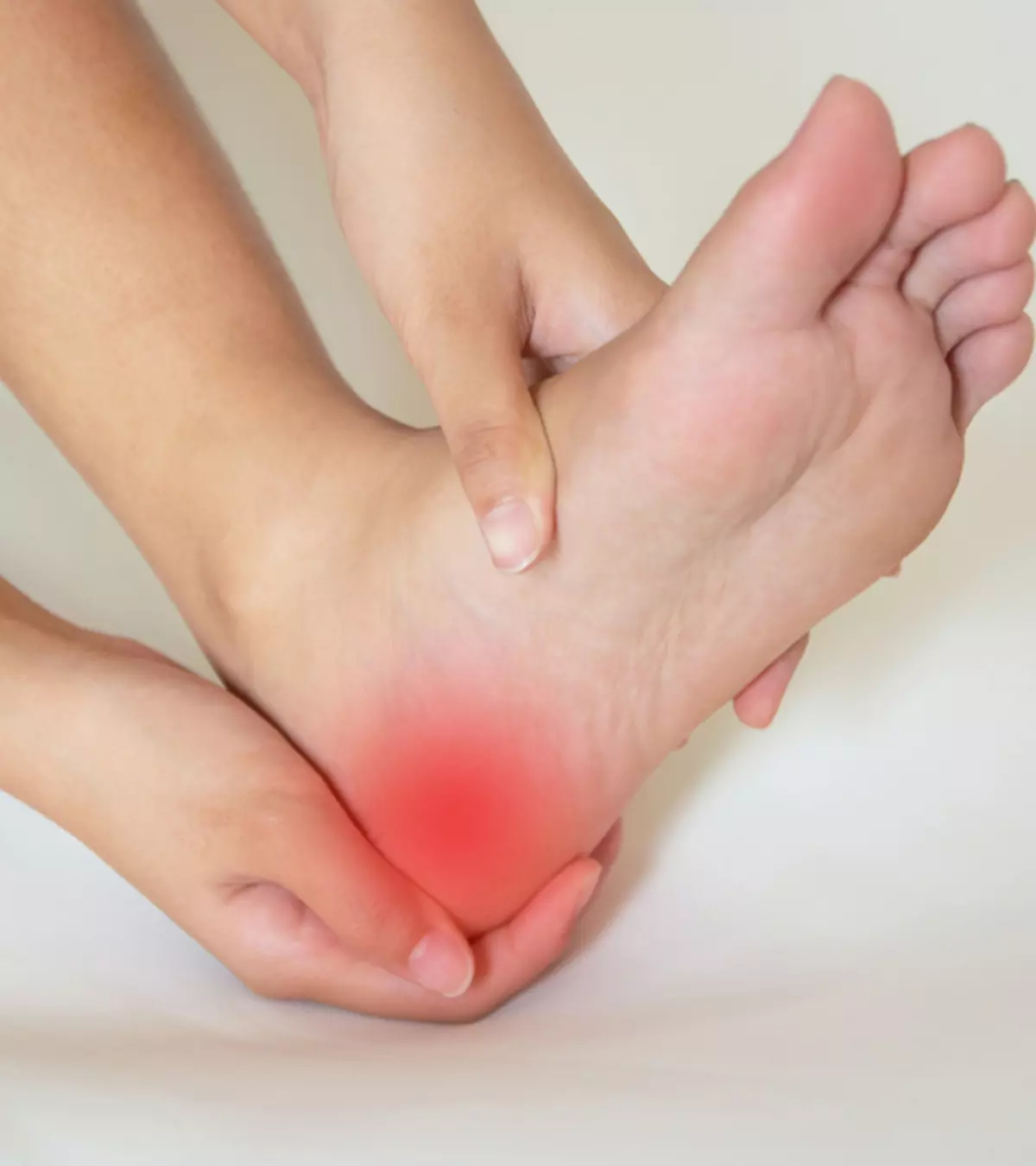
Image: ShutterStock
Children are naturally energetic and tend to enjoy jumping, running, and playing from the time they learn to walk. Heel pain in kids may result from regular sports activities, such as soccer and basketball. It is generally mild but may require timely diagnosis and treatment to prevent complications.

Heel pain usually begins with tenderness in the back of the heel and results in slight discomfort while walking. The pain may gradually become severe and interfere with your child’s day-to-day activities. Adequate rest and medications are the standard treatment options for heel pain in children. However, if your child limps or walks on their toes, it is best to consult a doctor and get the condition diagnosed.
This post provides information on the common causes, risks, complications, treatment options, and prevention of heel pain in kids.
Key Pointers
- Children mostly develop heel pain due to overusing their ankles while playing.
- Some conditions causing heel pain are calcaneal apophysitis, plantar fasciitis, Achilles tendinitis, and fractures.
- If left untreated, heel pain may lead to complications, such as stiffness in joints, early arthritis, and more.
- Wearing proper footwear, doing stretching exercises, and having a nutritional diet are some ways to prevent
Causes Of Heel Pain In Children
Some of the most common causes of heel pain in children include conditions such as calcaneal apophysitis, Achilles tendonitis, plantar fasciitis, and fractures. Children develop these conditions due to overuse of the ankles while playing. Let us have a look at each condition in detail.
1. Calcaneal apophysitis (Sever’s Disease)
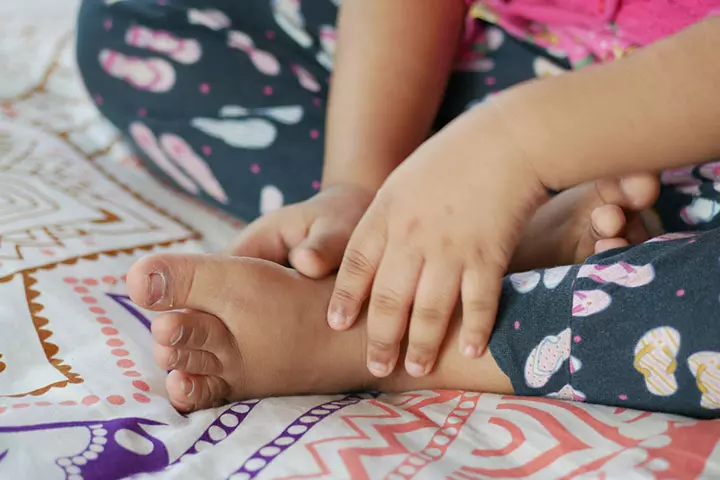
The condition is characterized by pain in the heel’s growth plate (the apophysis). It is a self-limiting condition common in children aged eight to 15 years. However, it is also seen in children as young as six years.
Earlier, the condition was characterized by pain in the heel’s posterior and inferior regions in very active and overweight children. However, recent studies suggest that the pain is caused by the pull of the Achilles tendon on the apophysis during sports and running activities. Your child’s doctor or podiatrist would conduct a physical examination and recommend an X-ray to diagnose the condition (1).
Symptoms
- Pain at the back of the heel
- Tenderness when the back of the foot is squeezed
- Slight warmth and tenderness
- Child limping and walking on toes
Treatment
Treatment options may include methods to minimize the inflammation and mechanical strategies to modify the factors contributing to calcaneal apophysitis (1).
Minimizing inflammation: This includes the use of ice, stretching, rest, or restriction of activities. Sometimes, the doctor might also prescribe topical non-steroidal anti-inflammatory drugs (NSAIDs). However, the use of topical NSAIDs is contraindicated in children under the age of 12.
Modifying causative factors: These include taping or padding, orthoses, and heel raises. Your doctor is the best person to prescribe the right treatment for your child. Physical therapy strengthens heel muscles and improves flexibility. A pediatric physical therapist can create a custom exercise program tailored to your child’s needs.
2. Plantar fasciitis
This condition has an 8.2% prevalence in children and is considered to be an overuse syndrome. It is said to develop over time because of repeated stress and excessive use of the plantar fascia, a thick band of connective tissue along the arch of the heel. It is mostly seen in children who participate in jumping, hill running, or speed work (2). Diagnosis is made mainly via physical examination and medical history.
Symptoms
- Stiffness and foot pain in the morning
- Difficulty in walking
- Tenderness near the arc of the foot
The symptoms tend to worsen in the morning after prolonged rest and subside through the day. Some risk factors of plantar fasciitis include
- Obesity
- Anatomical features such as high-arched feet and flat feet in children
- Weak muscles in the foot
- Walking barefoot on hard surfaces
- Prolonged weight bearing
- Wearing wrong footwear (3)
 Point to consider
Point to consider3. Achilles tendinitis

The Achilles tendon is known to be the strongest tendon in the body. It attaches the two muscles of the calf to the heel bone and helps push the foot forward while walking or running. Achilles tendinitis refers to the inflammation of the Achilles tendon due to acute trauma, excessive use, or lack of training (4). The pediatrician would perform a physical examination, ultrasound, and magnetic resonance imaging to diagnose Achilles tendinitis.
Symptoms
- Localized pain in the heel
- Swelling and stiffness in the morning
- Impaired functioning of the Achilles tendon
Treatment
The treatment options include conservative methods and surgery.
Conservative methods include
- Reducing activity levels
- Usage of NSAIDs
- Physiotherapy
- Adoption of footwear
- Usage of braces with a cast (5)
 Point to consider
Point to consider4. Fractures

Fractures can also lead to heel pain. Children who engage in high-impact sports are susceptible to sports injuries and at a higher risk of developing heel fractures. However, such fractures are rare and occur after a fall. Diagnosis includes a physical examination, X-ray, CT scan, or magnetic resonance.
Symptoms
- Swelling
- Bruising
- Severe pain
- Inability to put weight on the fractured foot
Treatment
Studies have shown that conservative treatments give an excellent outcome for pediatric heel bone fractures than surgical treatments.
Conservative treatments include rest, ice, compression, and elevation (RICE). The child is instructed to take adequate rest. Ice can be applied to the affected area to reduce the pain and swelling. Your child’s doctor might recommend wearing orthotics, wrapping the foot in a plastic bandage, and keeping the foot at an elevated height.
If the conservative treatments do not work or if multiple fractures exist, a combination of surgery and physiotherapy would be advised (6).
Risks And Complications Of Heel Pain

Often, heel pain in children is neglected until it starts to affect their quality of life. If left untreated, fractures and other conditions could result in lifelong problems such as stiffness in joints, early arthritis, and decreased ankle motion. Your child may experience pain while walking, which may further discourage them from participating in sports.
Prevention Of Heel Pain

Take the following precautions to prevent heel pain in children.
- Instruct them to wear proper footwear that supports the foot.
- Always tell your children to do some warm-up exercises for kids before and after playing any sport.
- Teach them stretching exercises of the heel and calves.
- Give them nutritional foods that are rich in calcium, which might help build healthy bones and ligaments.
Heel pain due to the above reasons may resolve in a couple of weeks, and your child can start participating in sports within three to six weeks. However, your doctor is the best person to estimate this, so discuss your child’s condition.
If your child’s heel pain does not subside within the stipulated time, and if the condition worsens, take your child to the doctor. Also, if your child experiences heel pain without any strenuous activity, it may need further inspection as such pain may be due to infections or tumors.
Frequently Asked Questions
1. How can I relieve my child’s heel pain?
You can apply a cold compress to the affected area. Using shoe inserts, wearing heel-supporting shoes, and ensuring adequate rest also relieve heel pain in children. If these interventions do not work, consult a doctor for appropriate medications.
2. When should I take my child to the doctor for foot pain?
Take your child to a foot specialist or a doctor if they develop unbearable heel pain that does not go away with basic treatment measures (7). The child must also see a doctor if the heel pain is accompanied by a foot deformity and pain that affects the ability to walk.
3. What types of shoes are recommended for children with heel pain?
Shoes that have proper arch support and heel lift are recommended for children with heel pain. You may use heel cups or inserts in conjunction with supportive shoes for additional cushioning and comfort. Whichever shoes you choose, ensure they fit properly and provide ample space for the toe to move freely (10).
4. Is there a difference in heel pain in children versus adults?
Heel pain in adults is not the same as heel pain in children. While the heel pain in adults subsides after proper care and walking, pediatric heel pain does not show improvement in the same manner and requires medical intervention to attain relief (11).
Heel pain in kids usually occurs due to overuse injury to bones and ligaments or fractures from high-impact sports. In addition, the conditions may be aggravated by structural problems in the bones or muscles, wearing the wrong footwear, calcium deficiency, or obesity. While some of these pains resolve by allowing adequate rest, others may require medications or specialized therapy. Check with or doctor if pain persists beyond a few days or is associated with swelling or bruising. Assure your children that the problem is temporary, and they will resume playing once it heals.
Infographic: Stretching Exercises For Children’s Heel Pain
Heel pain can be quite uncomfortable and hinder children’s daily activities, especially if they are into sports. So if your child experiences frequent heel pains, let them try these stretching exercises that target the calf muscles and heels. We suggest you paste it into their room for them to follow the steps and exercise.
Some thing wrong with infographic shortcode. please verify shortcode syntax
Illustration: Common Causes Of Heel Pain In Kids: Treatment & Prevention

Image: Dalle E/MomJunction Design Team
Learn efficient techniques to diagnose Sever’s Disease in children and implement treatments to relieve heel pain. Gain valuable knowledge to promptly and effectively support your child’s well-being.
References
1. Alicia M James, Cylie M Williams, and Terry P Haines; “Effectiveness of interventions in reducing pain and maintaining physical activity in children and adolescents with calcaneal apophysitis (Sever’s disease): a systematic review”; Journal of Foot and Ankle Research (2013).
2. Clinton J. Daniels and Adam P. Morrell; Chiropractic management of pediatric plantar fasciitis: a case report; Journal of Chiropractic Medicine (2012).
3. Emily N Schwartz, and John Su; Plantar Fasciitis: A Concise Review; The Permanente Journal (2014).
4. Achilles Tendonitis; StatPearls
5. Hong-Yun Li and Ying-Hui Hua; Achilles Tendinopathy: Current Concepts about the Basic Science and Clinical Treatments; BioMed Research International (2016).
6. Fractures of the Calcaneus (Heel Bone Fractures); American College of Foot and Ankle Surgeons
7. Foot Pain: 5 Signs Your Child Should See a Foot Specialist; Cincinnati Foot And Ankle Care
8. Plantar Fasciitis; Orthopaedic Institute for Children
9. Achilles Tendonitis; Nemourd kids’s Health
10. Heel Pain and Sever’s Disease; Healthy Children
11. Calcaneal Apophysitis (Sever’s Disease); Foot Health Facts
Community Experiences
Join the conversation and become a part of our nurturing community! Share your stories, experiences, and insights to connect with fellow parents.
Read full bio of Dr. Dur Afshar Agha
Read full bio of Dr Bisny T. Joseph
Read full bio of Dr. Ritika Shah
Read full bio of Shinta Liz Sunny






